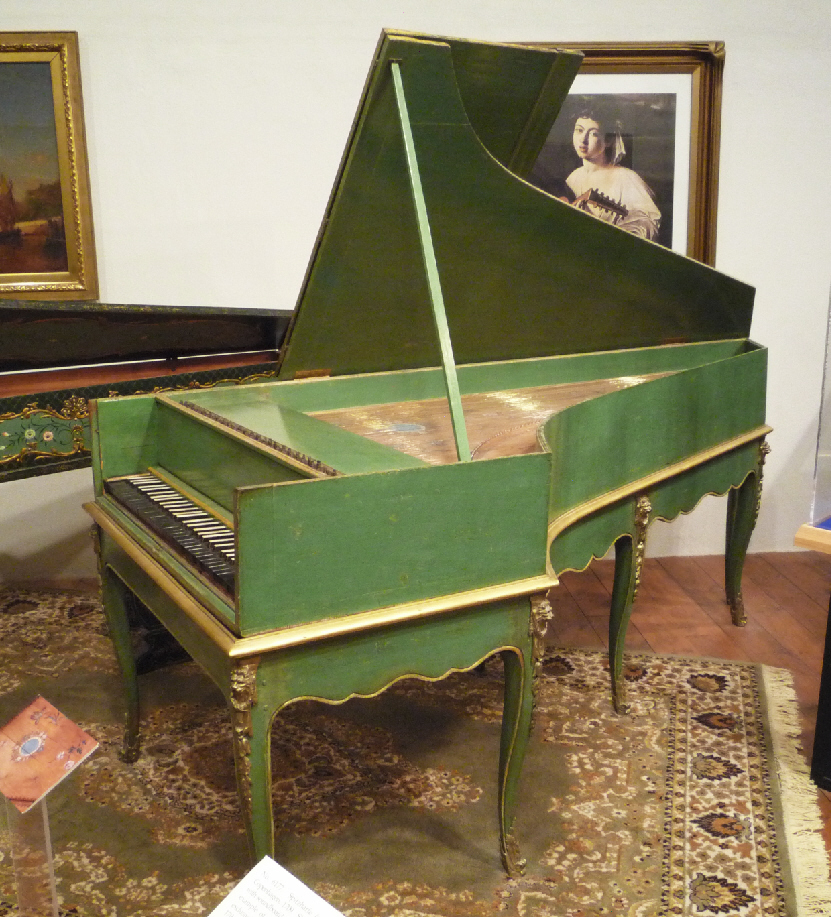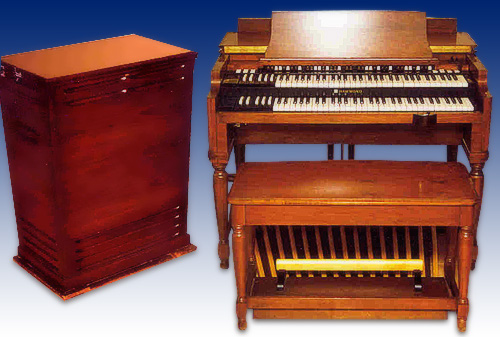|
Dulce Melos
The dulce melos (or doucemelle) is an early keyboard instrument and possible ancestor of the piano. The instrument is described as a type of zither, similar to a hammered dulcimer, but with the strings struck by hammers on keys. The instrument had twelve pairs of strings, each divided into three sections in a 4:2:1 ratio, resulting in a full chromatic octave of 36 notes, as each note is divided into two higher octaves by the bridges. Among the instrument's first attestations was a 1440 work by Henri-Arnault de Zwolle. The instrument was researched in the 1844 publication ''Dissertation sur les instruments de musique au moyen-age'' by Bottée de Toulmon, which detailed a piano-like instrument detailed in a 15th-century Latin manuscript. References Further reading * {{Authority control Piano Keyboard instruments Early musical instruments ... [...More Info...] [...Related Items...] OR: [Wikipedia] [Google] [Baidu] |
1440 Dulce Melos
*
{{numberdis ...
144 may refer to: * 144 (number), the natural number following 143 and preceding 145 * AD 144, a year of the Julian calendar, in the second century AD * 144 BC, a year of the pre-Julian Roman calendar * ''144'' (film), a 2015 Indian comedy * ''144'' (video game), working title of ''The Path'', a psychological horror art game * 144 (New Jersey bus), a bus route in New Jersey, USA * Volvo 144, the main 4-door sedan model of the Volvo 140 Series * Worcestershire bus route 144 * 144 Vibilia, a main-belt asteroid See also * List of highways numbered 144 Highways numbered 144 include: Canada * New Brunswick Route 144 * Ontario Highway 144 * Prince Edward Island Route 144 Costa Rica * National Route 144 (Costa Rica), National Route 144 India * National Highway 144 (India) Japan * Japan Nation ... [...More Info...] [...Related Items...] OR: [Wikipedia] [Google] [Baidu] |
Keyboard Instrument
A keyboard instrument is a musical instrument played using a keyboard, a row of levers that are pressed by the fingers. The most common of these are the piano, organ, and various electronic keyboards, including synthesizers and digital pianos. Other keyboard instruments include celestas, which are struck idiophones operated by a keyboard, and carillons, which are usually housed in bell towers or belfries of churches or municipal buildings. Today, the term ''keyboard'' often refers to keyboard-style synthesizers and arrangers as well as work-stations. These keyboards typically work by translating the physical act of pressing keys into electrical signals that produce sound. Under the fingers of a sensitive performer, the keyboard may also be used to control dynamics, phrasing, shading, articulation, and other elements of expression—depending on the design and inherent capabilities of the instrument. Modern keyboards, especially digital ones, can simulate a wide range of ... [...More Info...] [...Related Items...] OR: [Wikipedia] [Google] [Baidu] |
Piano
A piano is a keyboard instrument that produces sound when its keys are depressed, activating an Action (music), action mechanism where hammers strike String (music), strings. Modern pianos have a row of 88 black and white keys, tuned to a chromatic scale in equal temperament. A musician who specializes in piano is called a pianist. There are two main types of piano: the #Grand, grand piano and the #Upupright piano. The grand piano offers better sound and more precise key control, making it the preferred choice when space and budget allow. The grand piano is also considered a necessity in venues hosting skilled pianists. The upright piano is more commonly used because of its smaller size and lower cost. When a key is depressed, the strings inside are struck by felt-coated wooden hammers. The vibrations are transmitted through a Bridge (instrument), bridge to a Soundboard (music), soundboard that amplifies the sound by Coupling (physics), coupling the Sound, acoustic energy t ... [...More Info...] [...Related Items...] OR: [Wikipedia] [Google] [Baidu] |
Hammered Dulcimer
The hammered dulcimer (also called the hammer dulcimer) is a percussion-string instrument which consists of String (music), strings typically stretched over a trapezoidal resonant sound board (music), sound board. The hammered dulcimer is set before the musician, who in more traditional styles may sit cross-legged on the floor, or in a more modern style may stand or sit at a wooden support with legs. The player holds a small spoon-shaped Percussion mallet, mallet or ''hammer'' in each hand to strike the strings. The Greco-Roman world, Graeco-Roman word ''dulcimer'' (sweet song) derives from the Latin ''dulcis'' (sweet) and the Greek ''melos'' (song). The dulcimer, in which the strings are beaten with small hammers, originated from the psaltery, in which the strings are plucked. Hammered dulcimers and other similar instruments are traditionally played in Iraq, India, Iran, Southwest Asia, China, Korea, and parts of Southeast Asia, Central Europe (Hungary, Slovenia, Romania, Slovaki ... [...More Info...] [...Related Items...] OR: [Wikipedia] [Google] [Baidu] |
Henri-Arnault De Zwolle
Henri Arnaut de Zwolle (c. 1400, in Zwolle – September 6, 1466 in ParisJohn Koster, 'Arnaut de Zwolle, Henri', ''Grove Music Online'' ed. L. Macy (Accessed Sept 26 2007)) (often ''Henri Arnault'', also Henricus Arnold/Arnoldus/Arnoul of/van Zwolle) was employed as a physician, astronomer, astrologer, and organist to Philip III, Duke of Burgundy, Philip the Good. He is best known for a treatise on musical instruments. Henri Arnaut apparently was born in Zwolle. There are no data on his education. Perhaps he became a physician first, as he was named ''Magister Henricus Arnault, Medicus Alemannus de Zuvolis'' (Zuvolis = Zwolle). He became a student of the instrument-maker Jean de Fusoris, who was employed between 1400 and 1445 by Philip the Good and later by the French king Louis XI of France. By 1432, Henri was at the court of Philip the Good in Dijon as well. Between 1438 and 1446 (several decades before the activities of Leonardo da Vinci), he created manuscripts in Latin on a w ... [...More Info...] [...Related Items...] OR: [Wikipedia] [Google] [Baidu] |
Piano
A piano is a keyboard instrument that produces sound when its keys are depressed, activating an Action (music), action mechanism where hammers strike String (music), strings. Modern pianos have a row of 88 black and white keys, tuned to a chromatic scale in equal temperament. A musician who specializes in piano is called a pianist. There are two main types of piano: the #Grand, grand piano and the #Upupright piano. The grand piano offers better sound and more precise key control, making it the preferred choice when space and budget allow. The grand piano is also considered a necessity in venues hosting skilled pianists. The upright piano is more commonly used because of its smaller size and lower cost. When a key is depressed, the strings inside are struck by felt-coated wooden hammers. The vibrations are transmitted through a Bridge (instrument), bridge to a Soundboard (music), soundboard that amplifies the sound by Coupling (physics), coupling the Sound, acoustic energy t ... [...More Info...] [...Related Items...] OR: [Wikipedia] [Google] [Baidu] |
Keyboard Instruments
A keyboard instrument is a musical instrument played using a keyboard, a row of levers that are pressed by the fingers. The most common of these are the piano, organ, and various electronic keyboards, including synthesizers and digital pianos. Other keyboard instruments include celestas, which are struck idiophones operated by a keyboard, and carillons, which are usually housed in bell towers or belfries of churches or municipal buildings. Today, the term ''keyboard'' often refers to keyboard-style synthesizers and arrangers as well as work-stations. These keyboards typically work by translating the physical act of pressing keys into electrical signals that produce sound. Under the fingers of a sensitive performer, the keyboard may also be used to control dynamics, phrasing, shading, articulation, and other elements of expression—depending on the design and inherent capabilities of the instrument. Modern keyboards, especially digital ones, can simulate a wide range of sou ... [...More Info...] [...Related Items...] OR: [Wikipedia] [Google] [Baidu] |





